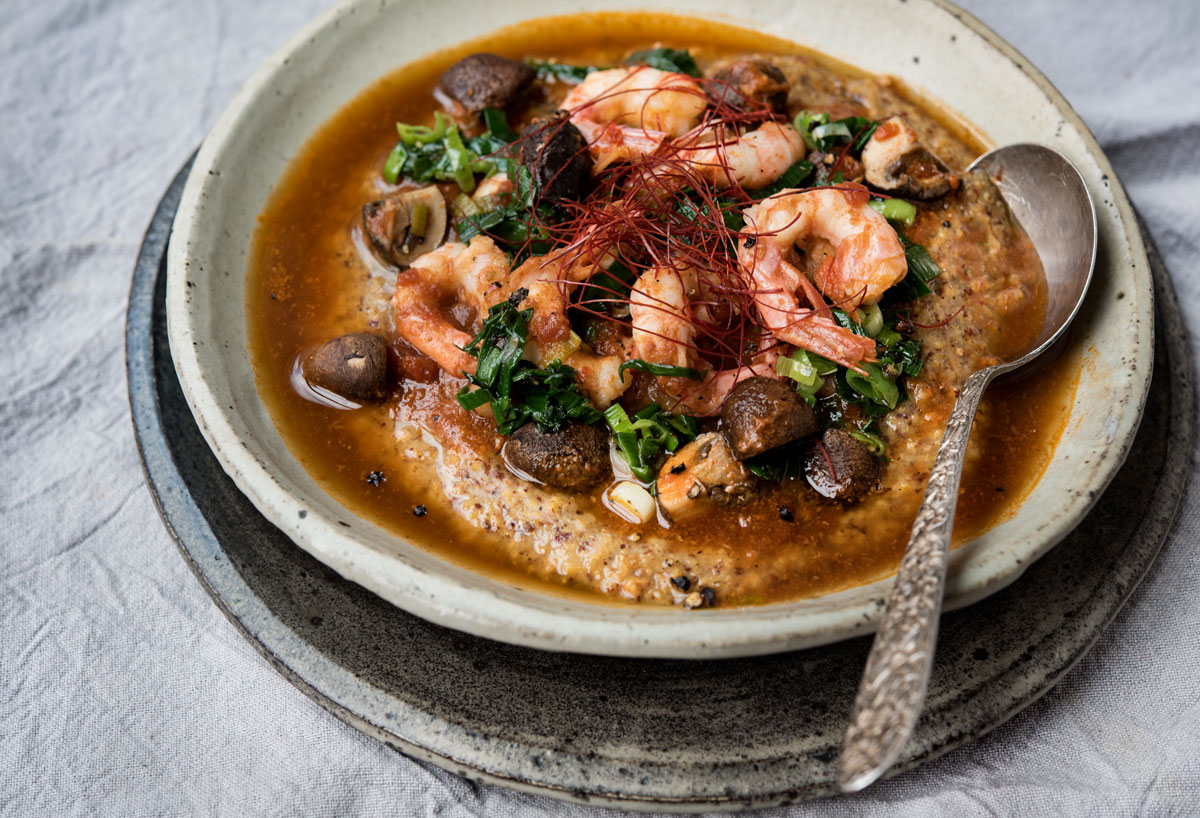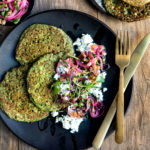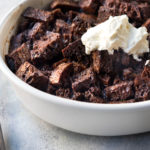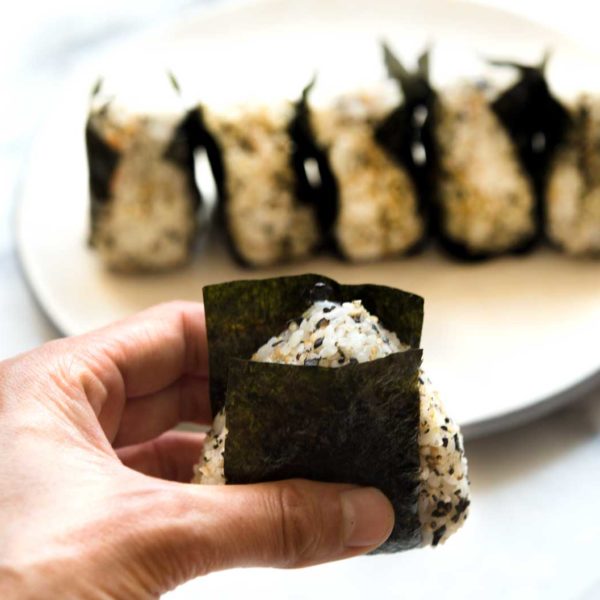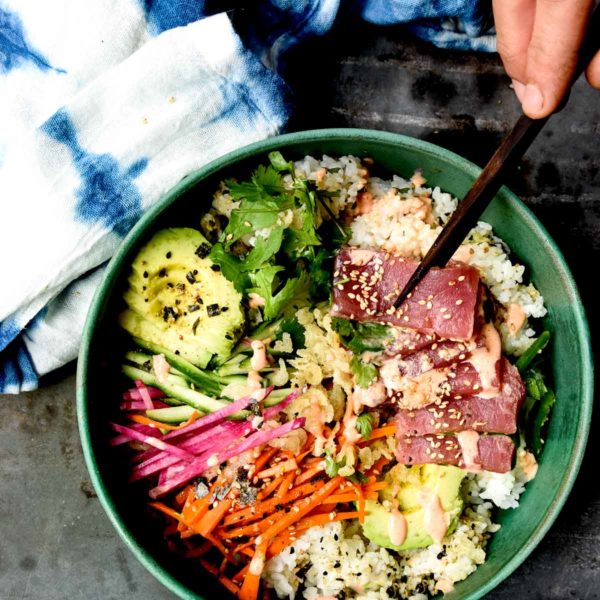In undertaking some desperately needed spring cleaning of my fridge this morning, I noticed that I had accumulated several bags of polenta (all now half-full) and a bag of grits buried in the freezer. I had also amassed several ziplock bags full of frozen shrimp shells. Always save the shrimp shells (and heads, if you have access to head-on-shrimp), as they make great stock.
You see where I’m going with this? Definitely the makings for shrimp and grits or shrimp and polenta.
That got me pondering, what’s the difference between polenta and grits?
Grits and polenta are both made from stone-ground cornmeal. However, Southern grits and Italian polenta are traditionally made from different types of corn. Most grits in the South are made from a class of corn called dent corn, whereas Italian polenta is made from a class of corn called flint corn. Grits and polenta also tend to differ in terms of how they are milled and the fineness of the grind. As for grits, they tend to be more finely textured and tender, whereas polenta is often more coarse and toothsome.
There’s always something to learn when it comes to ingredients and cooking.
This cornmeal (polenta) is neither from the southern United States nor from Italy. Rather, it’s from right here in Pennsylvania — from my friends at Plowshare Farms, who also raise top notch lamb. As you can see, Plowshare’s polenta has a coarse texture with a deep corn flavor with roasted elements.
As for the rest of the dish, a good stock elevates this dish. Shrimp stock is pretty quick and easy to prepare. First, you need to roast the shells (you’ve saved your shells, right?) and aromatics. Roasting brings out the all the briny flavor of the shrimp shells. Next, cover with water, simmer for about 30 minutes, and strain. From there, you can cool and freeze the stock for another day, or use it right away as the base for a delicious sauce to pour over polenta.
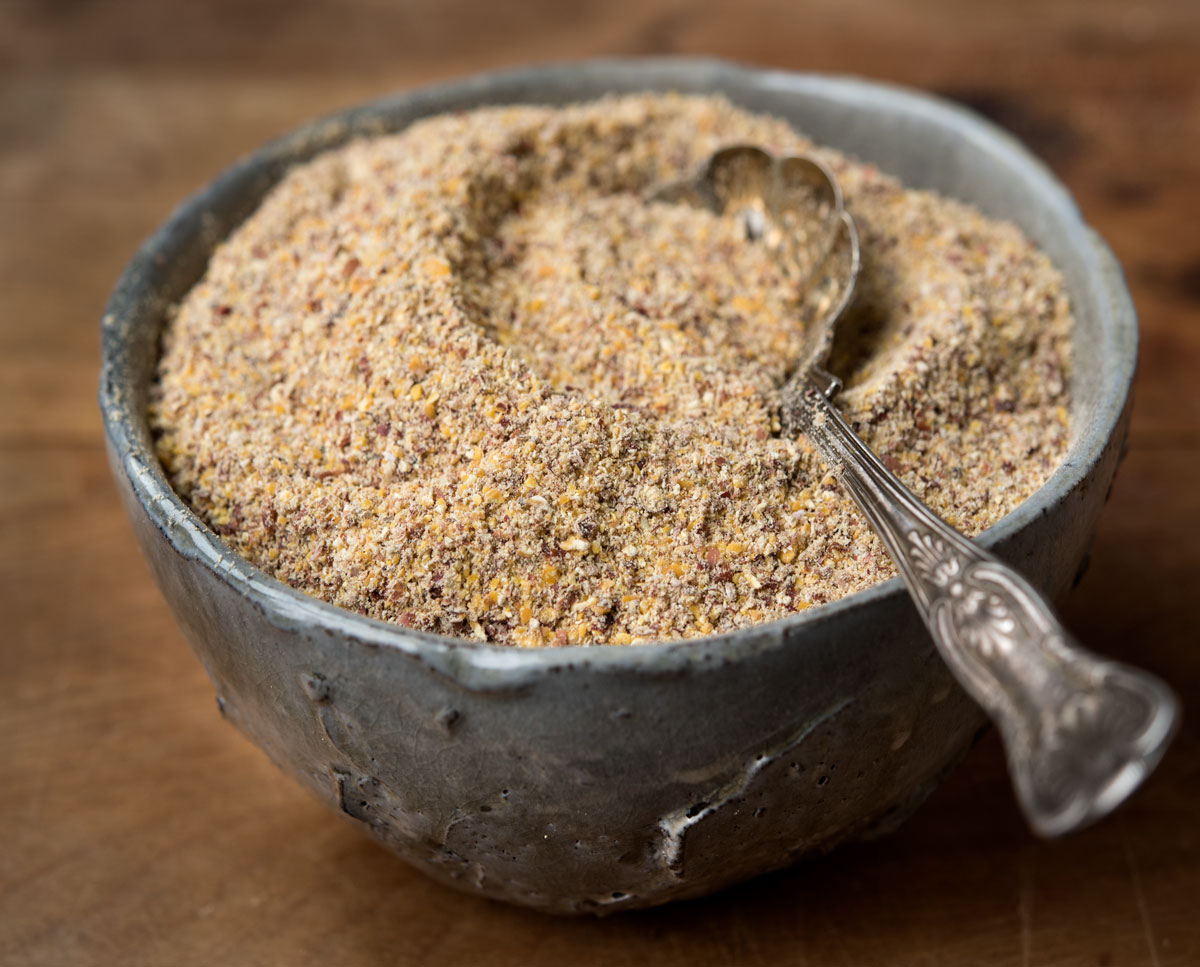
Hello (spring) green garlic.
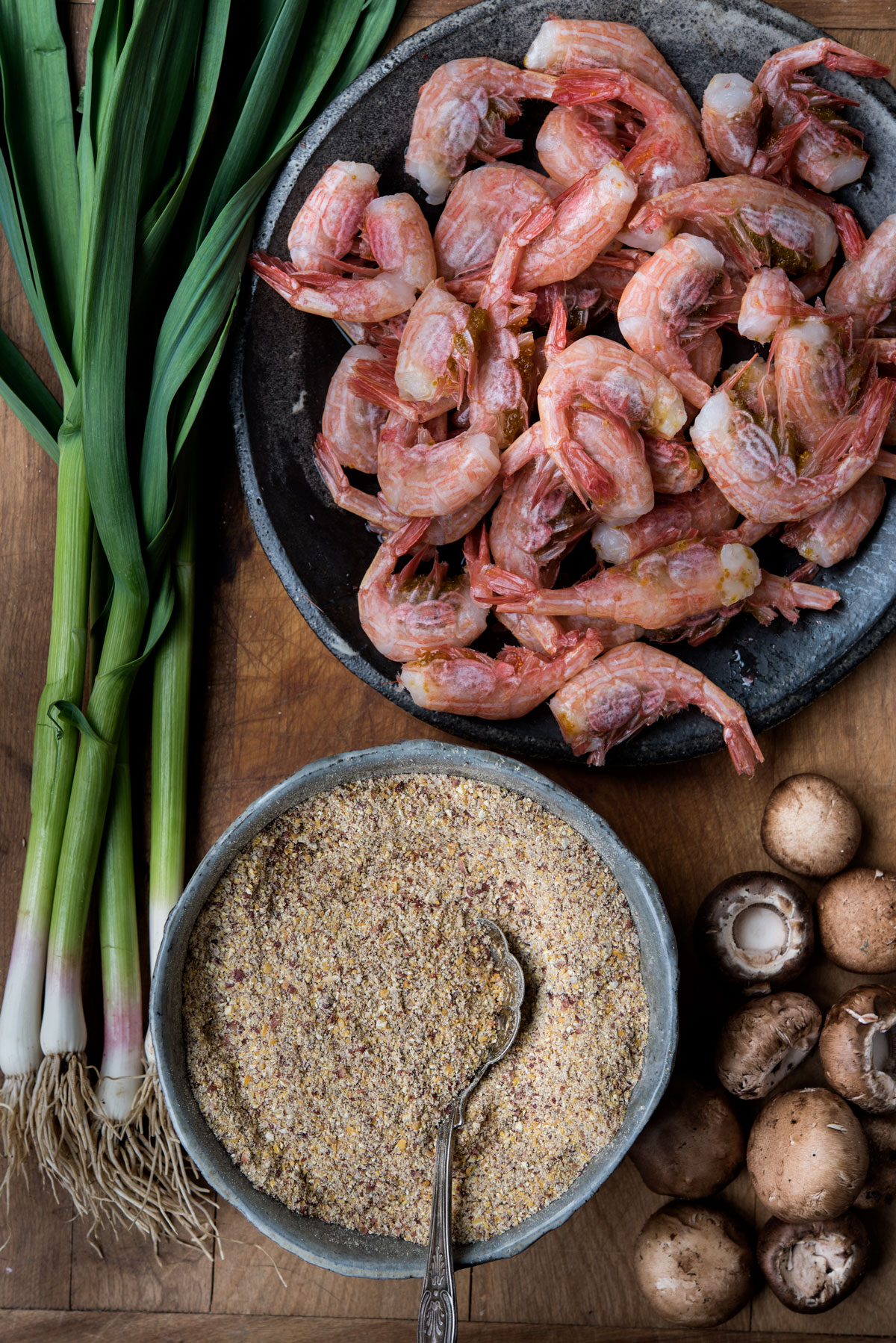
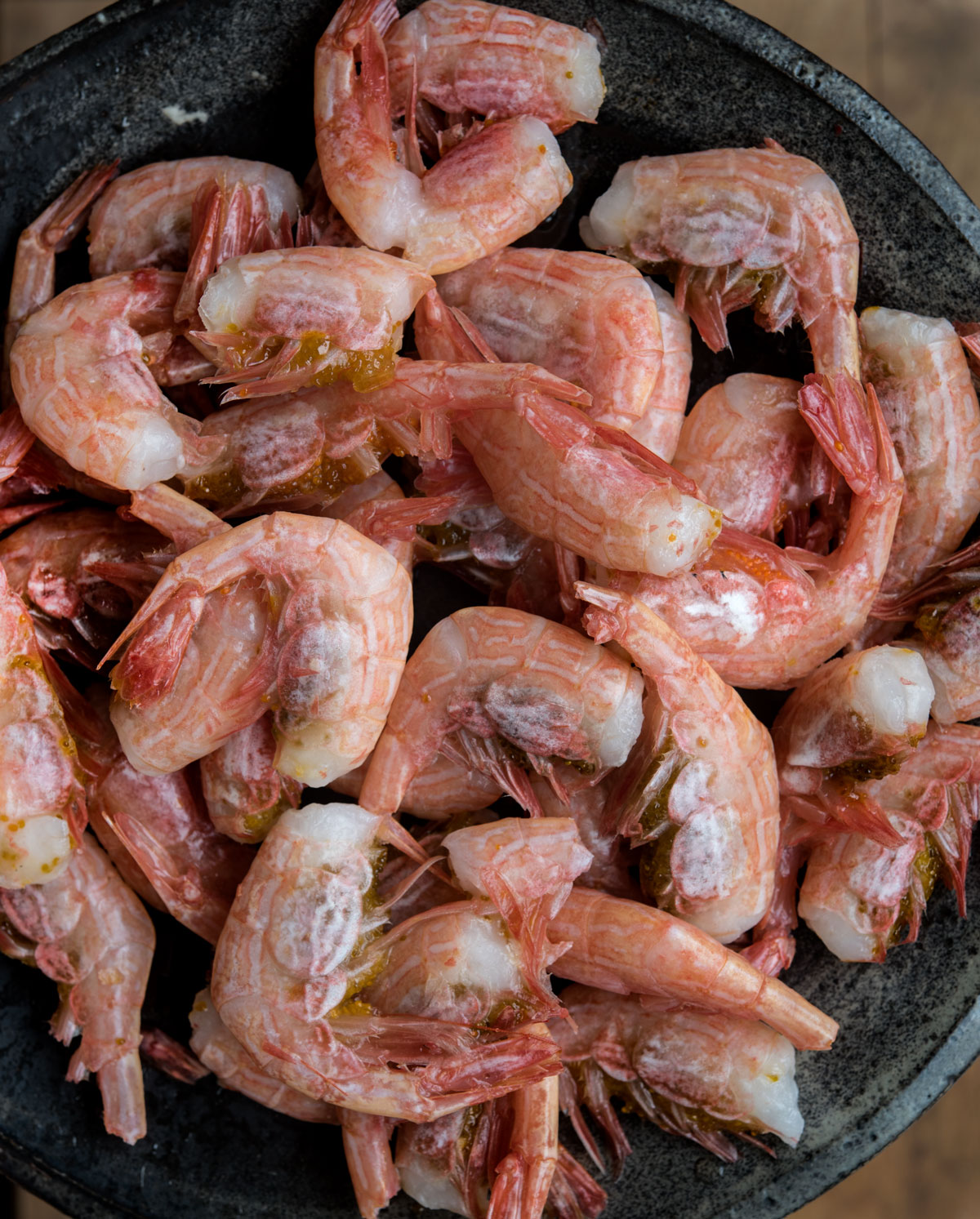
I’ve never seen this type of shrimp before. These are side striped shrimp — roe intact (alas, heads removed) — from Alaska. Someone was selling them at the Sunday farmers’ market.
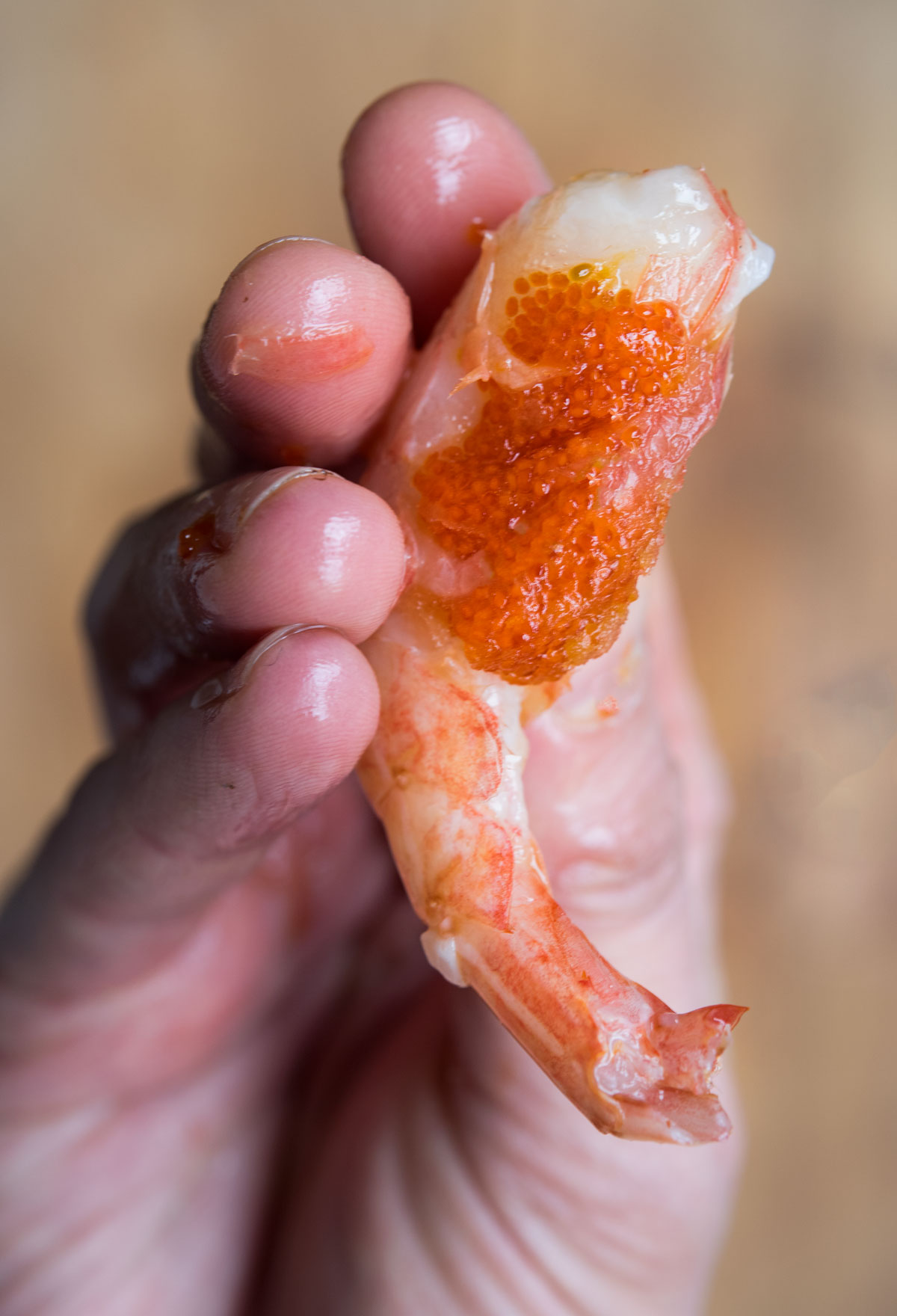
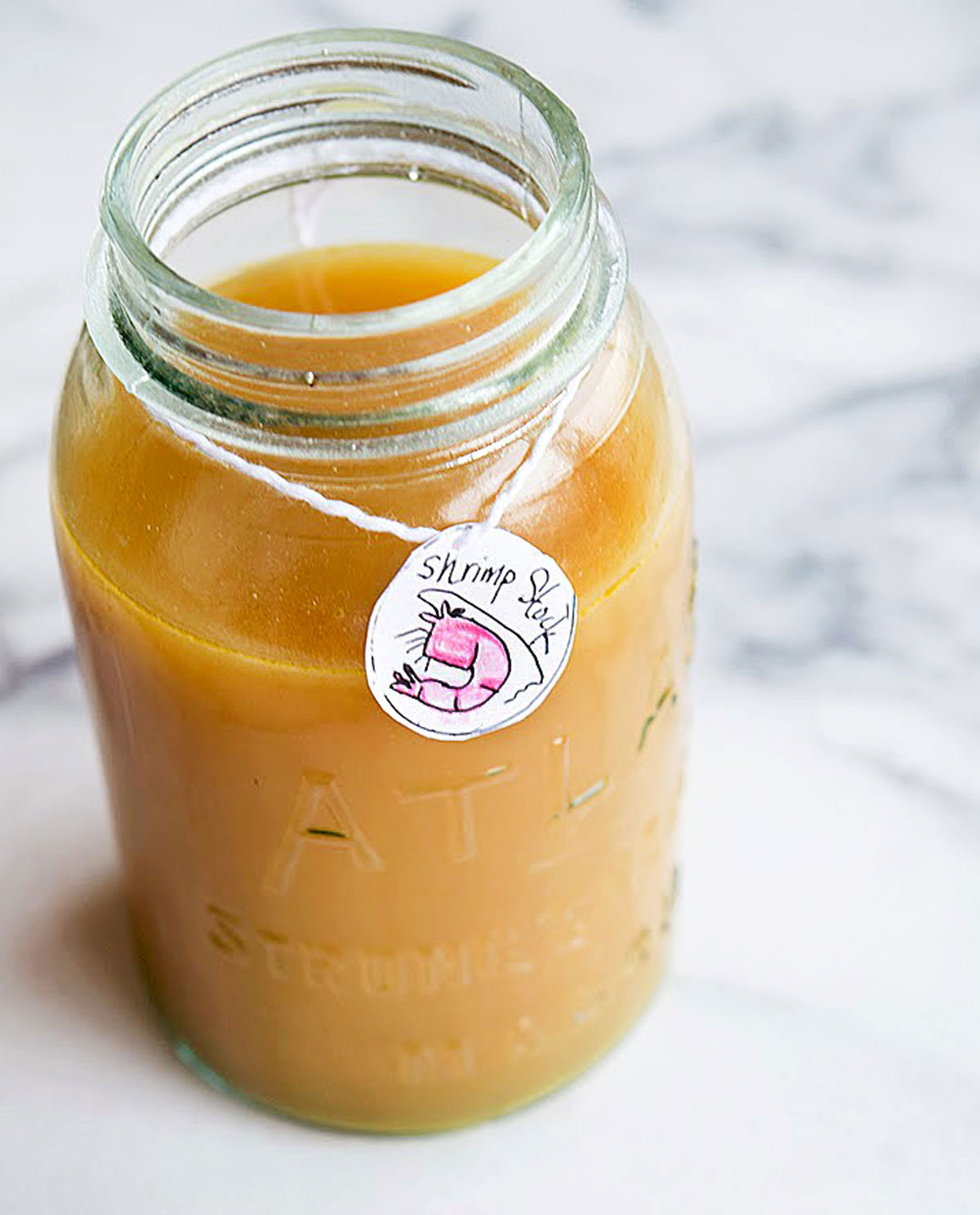
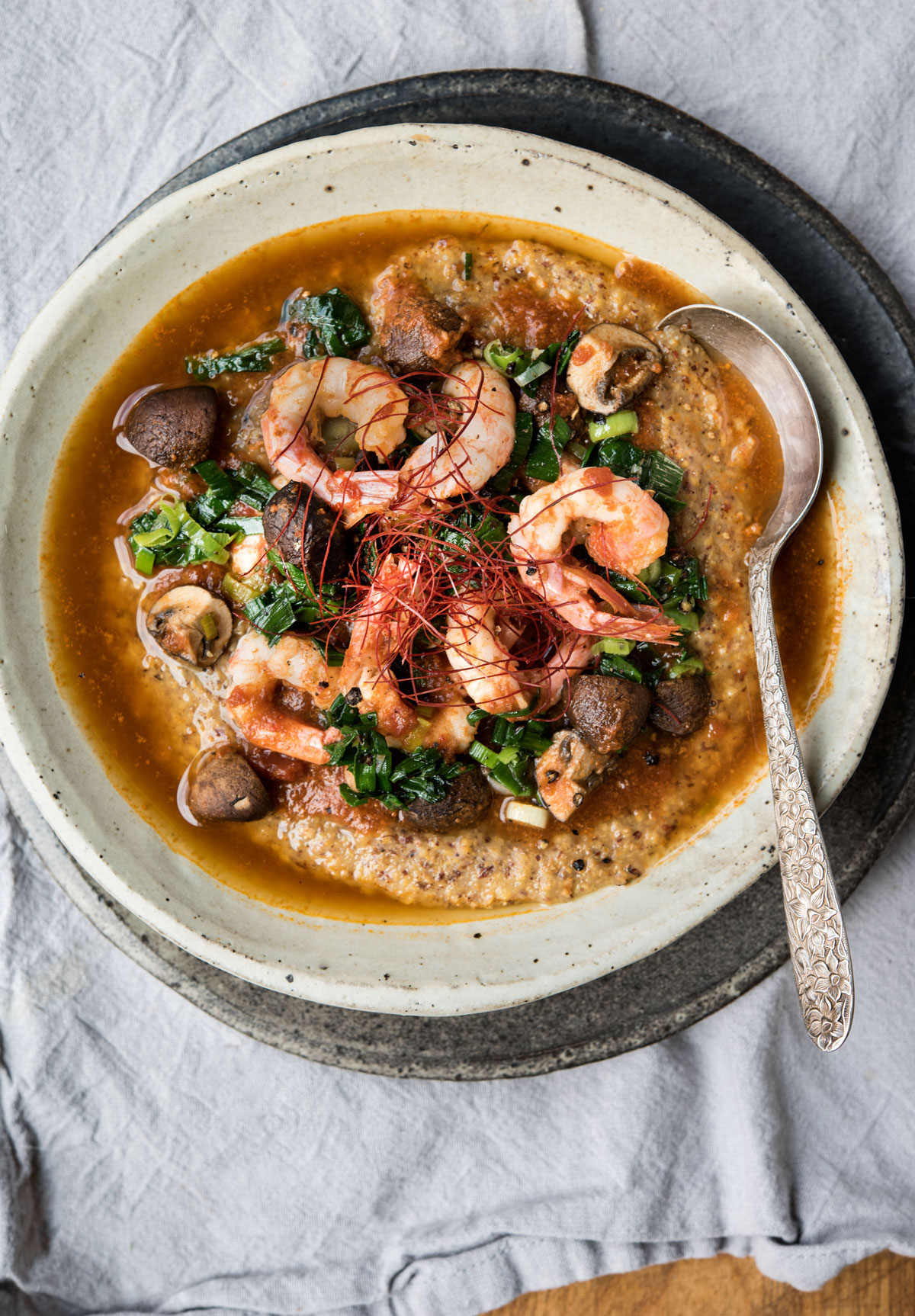
Polenta with Shrimp and Green Garlic
1 tablespoon butter
2 stalks green garlic, whites and greens, thinly sliced
Salt and pepper
2 cups of shrimp stock (see below)
1 dozen cremini mushrooms, quartered
1 pound of shrimp, peeled and deveined
Polenta (see below)
Red chile flakes or threads.
Heat the butter in a medium skillet. Add the green garlic, season with salt and pepper. Sauté until tender, about 3 to 4 minutes. Remove and set aside.
In the same pan, add the shrimp stock. Bring to a simmer. Season with salt to taste. Add the mushrooms and simmer until tender, about 5 to 7 minutes. Add the shrimp and poach until just cooked through, 2 to 3 minutes.
Divide the hot polenta amongst bowls. Ladle sauce and shrimp on top. Garnish with reserved green garlic. Sprinkle with chile flakes or threads. Serve immediately.
Polenta
I start with a 4:1 ratio of water to polenta and add more water as needed during the cooking process, depending on the grind of the polenta.
4 cups of water
1 cup polenta
2 tablespoons butter, more or less to taste
Salt and Pepper
Bring water to a boil. Add polenta slowly, whisking continuously until incorporated. Bring to a simmer and continue cooking, whisking often until polenta is porridge-y and tender, but still has some bite, about 1 hour, adding more water, a little at a time as needed if the polenta becomes too dry. Whisk in the butter. Season with salt and pepper.
Shrimp-Tomato Stock
2 teaspoons olive oil
4 cups shrimp shells
1 onion, quartered
1 celery stalk, roughly chopped
1 small bulb of fennel, cut into wedges
4-5 cloves of garlic, lightly smashed with side of knife
2 tablespoons tomato paste
1 1/2 cups whole canned tomatoes or fresh tomatoes
Few sprigs of parsley
1 to 2 bay leaves
Few whole black peppercorns
Heat oil in large soup pot or Dutch oven. Add shrimp shells, onion, celery, and fennel and sauté until the shrimp shells are nice and roasted and vegetable are golden brown, about 10 minutes. Add garlic and tomato paste, and sauté another minute. Add the tomatoes, parsley, bay leaves, and peppercorns. Cover with water, about 6 cups. Bring to a boil. Reduce heat and simmer for 30 minutes. Strain. Pour back into pot and reduce another 30 minutes to concentrate flavors.
Leftover stock freezes well.
